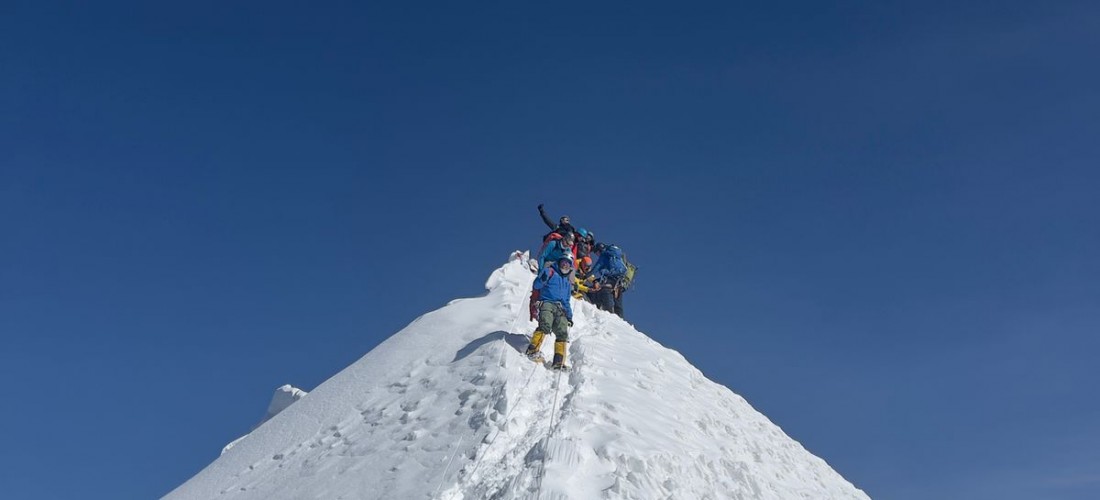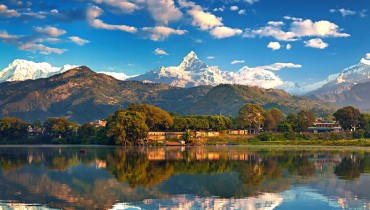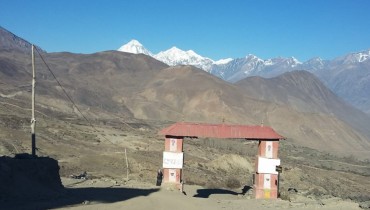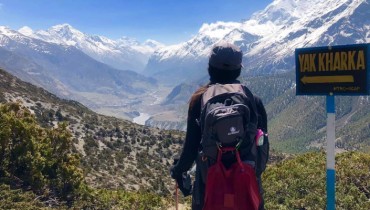Mera Peak Climbing Guide

We've been guiding Mera Peak Climbing in the Himalayas for years, so we love to provide you with some guides/tips about Mera Peak Climb. Mera (6476m/21246ft) is a magnificent peak with unmatched views. You won't be let down if you choose a well-organized plan.
Mera Peak climbing is a rare experience. Since Mera is regarded as a hiking peak, you can theoretically walk it on foot. Okay, so it's not exactly a stroll in the park, but it's also not really mountaineering. However, since Mera Peak is a legitimate six-thousander, you have certain things to know. This article will help you prepare for the Mera Peak climb.
Location
Mera is a peak that is administratively located in the Everest region of Nepal. It is a 6,476m tall trekking peak. Mera North (6,476m), Mera Central (6,461m), and Mera South (6,065m) are its three major summits. There is also a smaller "trekking peak" that may be seen from the south as a separate peak but is not shown on most regional maps.
The British expedition team first explored this mountain (comprised of George Lowe, Eric Shipton, Tenzing Norgay and Edmund Hillary). Sen Tenzing and Colonel Jimmy Roberts accomplished the first ascent of the Mera Central on May 20, 1953.
Permit and fees
For Mera Peak climbing, you need the following permits:
- TIMS (Trekkers Information Management System)
Every trekker who wants to go on a trek in Nepal has to have this permit. Each person pays NRS 2000 for this. This is around 17 USD or 15 EUR. As an alternative, your trekking company will set up a $20 site permission for you in Lukla.
- Sagarmatha National Park Entry Permit
To enter the Sagarmatha National Park, you need to obtain an entry permit. This permit costs NRS300/person. This permit is also required for the Everest Base Camp Trek.
- Mera Peak Permit:
In addition to all the above-mentioned permits, you require a Mera Peak climbing permit. Without a valid permit, you are not allowed to climb Mera Peak.
Build a camping habit
You will spend some of the time on the Mera Peak Climb sleeping outside in tents. On our excursions, we spend some nights in tents and others in the neighborhood tea houses. You can use this to get ready for the evenings spent on the mountain. You'll need to be ready to spend a few nights straight sleeping outside. With a wide range of situations, the weather might change dramatically. You must be confident erecting tents, competent in handling your camp equipment, and able to keep a high standard of personal cleanliness while camping.
Carry appropriate clothing, equipment and gear
At any time of the year, Mera Peak can produce a variety of weather conditions. The weather is never guaranteed to be stable, so you need to be experienced and ready for a range of weather conditions. As a result, you must ensure that you have the appropriate climbing footwear and equipment for this difficult and chilly environment. For our Mera Peak packing list, CLICK HERE.
When it comes to equipment, there is no such thing as a one-size-fits-all solution, so we believe the best course of action is to ask us for advice specifically for the season you want to climb Mera Peak.
Best time to climb Mera Peak
March to May and September to November are the best months to climb Mera Peak.
You must be prepared for cooler weather if you choose to climb in January, February and December. In any of these months, snow is possible. As a result, you will need to modify your equipment and gear to accommodate the colder weather you will experience while climbing Mera Peak.
June, July and August are the monsoon months. Landslides and flooding might make your trek unpleasant. The weather is hot and humid, and the sky is constantly covered in threatening clouds. It is always better to avoid monsoon season if you can.
Physical fitness and preparation
Mera Peak Climbing is technically straightforward (Ascend of Mera Peak requires approx. of 40-45 degrees of snow slopes), but as it is a high-altitude climb, and due to the seasonal crevasses in the region every year, the route can be long and climbing could be demanding and hard so you have to be prepared for this.
Trekkers/Climbers planning this climb to Mera Peak should be active outdoor people, physically in shape, and should have minimum experience of trekking in mountains previously. This climb requires basic mountaineering skills to compete with the final summit, but it is less technical compared to other peak climbing in Nepal such as Island Peak Climbing or Lobuche Peak Climbing.
Even if the trekkers do not have any previous climbing experience, they could still plan this climb but they have to be mentally prepared for the challenge of the climb, and obviously, they should be in excellent health condition and physically in great shape.
If you have glacier or ice climbing experience, it is a great plus point for this trip. Additionally, also organize a pre-climbing session at Mera Peak base camp to help you know the basic mountaineering skill prior to climbing Mera Peak so this will be a great benefit for you.
In addition to all of this, you should work out in the gym four to five days every week. To be able to trek for days on end, you must develop your strength and endurance. If you join up for one of our climbs to Mera Peak, we'll be here to help you get ready for the climb completely.
Select the appropriate itinerary
Please review your itinerary before ascending to the high camp at 5,778m and the summit at 6,476m. The schedule for acclimatization should not be underestimated. Base Camp is often skipped by climbers, which is not a wise strategy. Yes, you can decrease costs by skipping days, and you'll see a range of trip costs. This may not always be the best choice for your safety or your chances of making the climb, though.
Select a well-designed itinerary that includes a few acclimatization days, please. In case the summit day is postponed due to bad weather, make sure we have extra days in reserve. You have the best chance possible of climbing Mera Peak safely and successfully with the help of all these factors. The staff and timetable are in place, so we can accomplish this.
Having a prior ‘high altitude experience' is beneficial
We don’t mean “Mera Peak should not be attempted as your first high-altitude or mountaineering endeavor”. However, before ascending to severe elevations, you must understand how your body responds at 5,000m or higher up. Before making a decision to climb Mera Peak, we advise at least one multi-day high-altitude trip. So, you can understand how your body adjusts to the thin air and how to be prepared for high-altitude adventures.
Health and Personal Hygiene
You should have your own personal medical kit with any necessary medications and antibiotics since you will be in a remote area without access to genuine medical care. On the trip, you must keep your hands, feet, and body clean. Additionally, constantly keep in mind to use hand sanitizer.
We also advise you to have nail clippers and a nail brush to keep your nails neat. To avoid getting sunburned while traveling, SPF rating of 50+ sunscreen is a need. On a protracted outdoor expedition, maintaining proper personal hygiene might mean the difference between success and failure. You will benefit from having prior wilderness and camping expertise while you travel. We also advise you to contact us about this aspect of the trip and how to take care of yourself while camping in the wilderness.
Additional Skills
On this glacier route up the peak, you will be connected to other climbers and move in sync while walking alpine-style. There will be crevasse fields on the glacier that the path will cross. If you are skilled in utilizing crampons, a harness, and an ice axe before arriving to climb Mera Peak, this will provide you added experience and confidence ascending to the summit. You will be managing your breathing and temperature in a low oxygen condition. Although we give you pre-climbing training at Khare, additional skills will be very helpful for climbing Mera Peak.
Break your boots
Be sure you have the right footwear, it’s very important! The wrong shoes would make your trip unpleasant. You will require both mountaineering boots and trekking boots for this adventure. Before you go off on your adventure, your boots need to be worn. You should also make sure you are practicing in your mountaineering boots because they are heavier and require different muscles than trekking boots. On Mera summit, we frequently encounter people wearing subpar mountaineering footwear. People who suffer from frostbite will typically need to be airlifted as a result. This shouldn't ever occur. Make sure you are wearing the proper shoes. Spend the extra time and effort to practice in your mountaineering boots. It will be worthwhile when you are on the mountain.
Climbing Sherpa/Guide
There are many adventure companies offering guided trips to Mera Peak. Some of these companies just pick anyone to guide your trip. They probably don't know how to fix ropes, have little to no climbing experience, and have no idea how to manage customers at high altitudes. Make sure you have a local climbing Sherpa guide who can fix ropes, gives you pre-climb training at Khare, and lead you up/down Mera Peak safely.
Contact us right away if you have any questions or would like more details on climbing Mera Peak.
*Dream Big! Dream Travel!!
Quick Inquiry

Pokhara - The Lake City in Nepal

Upper Mustang Trek Guide


